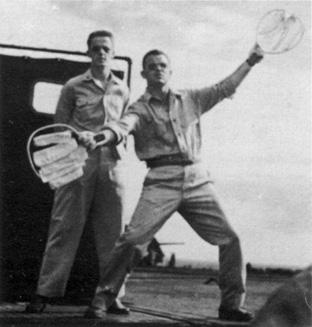We sort of forgot to answer this part of your question. The short answer is, it's a team effort with the Landing Signal Officers (LSOs). They are there in part to help assess ship's conditions and the rocking of the deck (mostly in pitch) and can wave aircraft off if they are out of sync with the movement of the deck (e.g. plane coming down with deck coming up = hard landing... bad). If the LSO waves you off, you go around, no questions asked. If the LSO asks for power, you add power. Line up calls... etc. Also, there's always a plan to have gas airborne, or a suitable divert for an escape valve if conditions get too severe. If you're "blue water", there's no divert, but then there has to be gas airborne and an alert tanker ready to launch if someone has trouble getting aboard. Getting back to the LSOs; they can often see things we can't from the cockpit. I can personally attest to having my bacon saved
at least twice due to a timely LSO call, not to mention the countless times a timely mic click or "liiiittle power" call helped me tag the target wire for a snazzy and confidence-inspiring landing vs. shining my ass in front of the air wing.
So... thanks, paddles, for helping me come home in one piece.

By the way, all of these challenges still exist with PLM. Lineup is purely sight-picture, and the movement of the deck can still cause you to get sent around.


